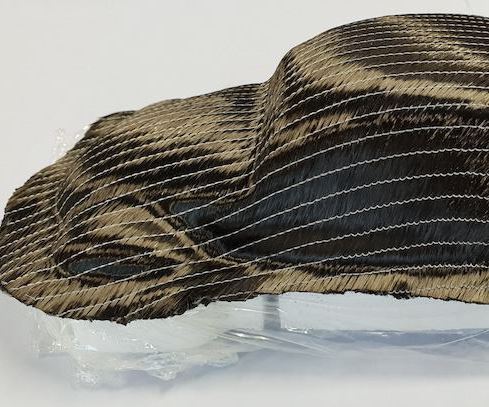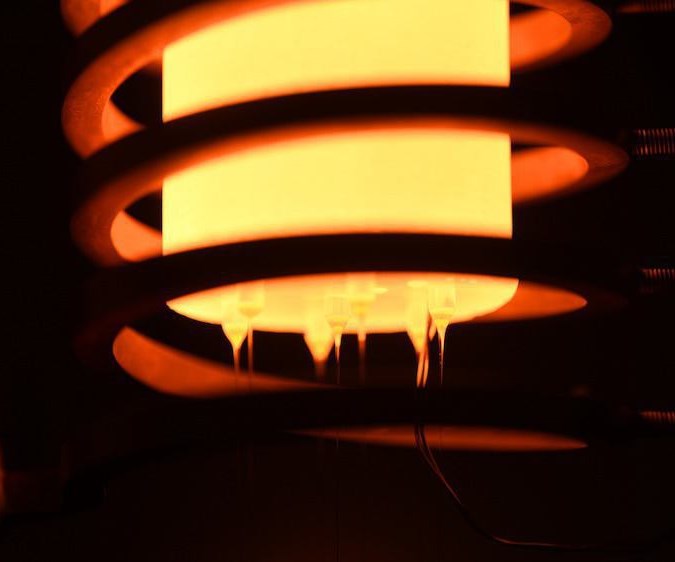JEC World 2019 preview: Institut für Textiltechnik at RWTH Aachen University
The Institute für Textiltechnik at RWTH Aachen University (ITA) and the Aachen Center for Integrative Lightweight Construction (AZL, Aachen, Germany) will demonstrate expertise in glass fibers, preforms and textile concrete at their joint booth at JEC World 2019.
The Institute für Textiltechnik at RWTH Aachen University (ITA) and the Aachen Center for Integrative Lightweight Construction (AZL, Aachen, Germany) are displaying at a joint booth at JEC World 2019, Booth D17, Hall 5A. They are demonstrating expertise and technologies for production of glass fibers, preforms and textile concrete for applications in automotive, aerospace and mechanical engineering.
For the first time, glass fibers will be produced live at the ITA booth using its newly constructed induction-heated glass fiber production line. The production line is said to enable increased flexibility in research, features a flexible design and consists of a platinum/rhodium alloy (Pt/Rh20) for use in high-temperature glasses. One of the innovations of the system is the inductively heated bushing. The production line was designed for quick testing of concepts and ideas, with a flexible modular design and faster operability of the induction system.
ITA’s DrapeCube offers a cost-effective design for the production of fiber preforms from textile semi-finished products. It is used in the production of preforms for prototypes and small series, and is suitable for the production of fiber-reinforced plastics (FRP). The DrapeCube is said to be a cost-effective alternative to high-cost stamp forming for FRP production, and includes a forming station able to reproduce the current industry standard for forming textile half branches. The process steps will be demonstrated in a video at the booth.
Also on display, ITA’s CFRP preform consists of carbon multiaxial fabrics formed by expanded polystyrene (EPS) for optimum draping quality. Preforms of increased quality can be produced by gentle, textile-compatible forming with foam expansion. For the first time, foam expansion was reportedly used to form preforms in such a way that the draping quality is improved compared to classic stamp forming. The advantages of ITA's CFRP preform are said to lie in plant cost savings and reduced proportion of waste is reduced due to its capability of near-net-shape production. In addition, rejects are said to be reduced, as fewer faults occur in the textile.
The displayed 12K carbon fiber rovings are shaped into a preform using Tailored Fiber Placement (TFP). For the further layer build-up, a fastener is integrated under the roving layers and fixed by additional loops. The highly integrative preforming approach offers the possibility of reducing weight and process steps as well as increasing mechanical performance. Reportedly, the embroidered preform with integrated metal fasteners reduces scrap due to TFP preforming and increases specific pull-out force. Automation of the production is also possible.
Related Content
-
Welding is not bonding
Discussion of the issues in our understanding of thermoplastic composite welded structures and certification of the latest materials and welding technologies for future airframes.
-
Combining multifunctional thermoplastic composites, additive manufacturing for next-gen airframe structures
The DOMMINIO project combines AFP with 3D printed gyroid cores, embedded SHM sensors and smart materials for induction-driven disassembly of parts at end of life.
-
Cryo-compressed hydrogen, the best solution for storage and refueling stations?
Cryomotive’s CRYOGAS solution claims the highest storage density, lowest refueling cost and widest operating range without H2 losses while using one-fifth the carbon fiber required in compressed gas tanks.

.jpg;width=70;height=70;mode=crop)
















